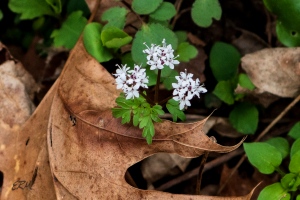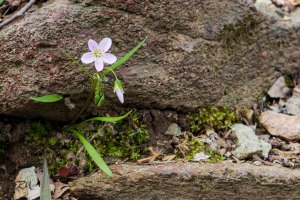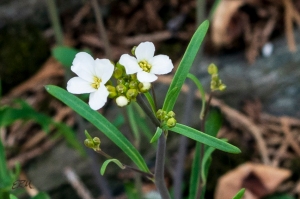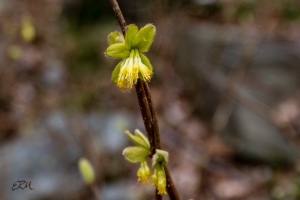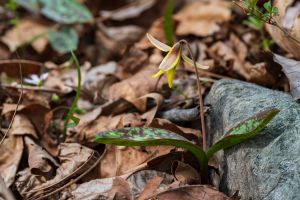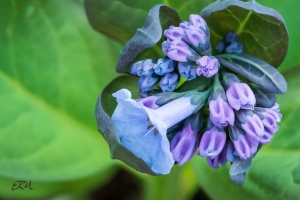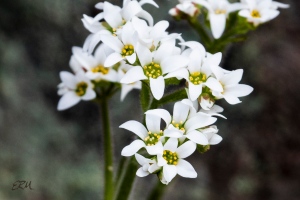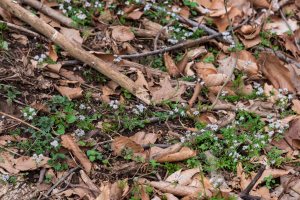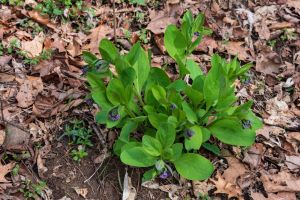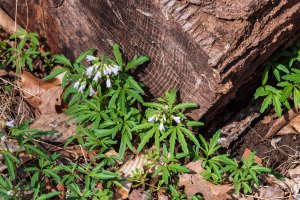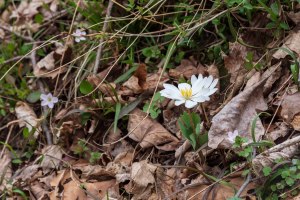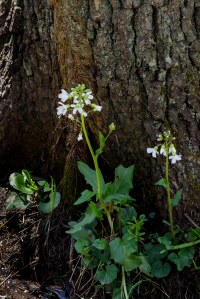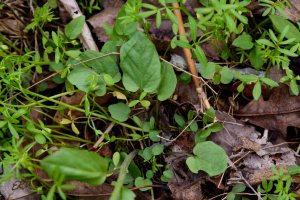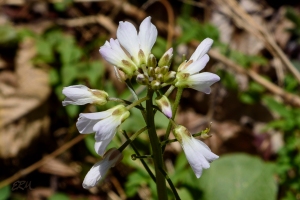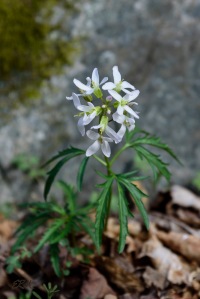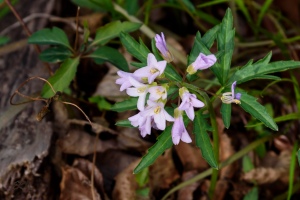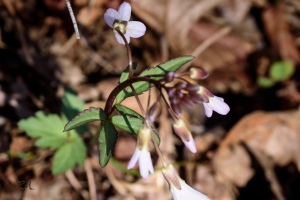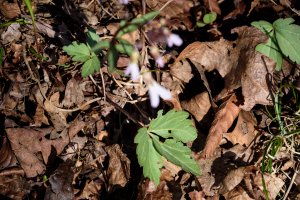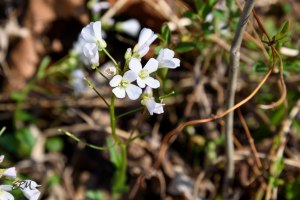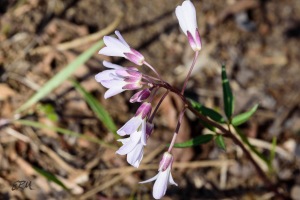The spring ephemerals are such a delight after a long winter. And even though it was an unusually warm winter, it seemed long to those of us who love botanizing.
The short blooming period of the spring ephemerals makes them even more special. These are the forbs that emerge from the ground, grow a few leaves, flower, maybe grow a little more, and then die back to the ground by the time the trees under which they grow leaf out.
To be honest, after a few years writing this blog I’ve run out of things to say about most of these plants, but I still love finding and photographing them. Here’s a look at what was going on in the Potomac Gorge last week, with links to more detailed posts I’ve written in previous seasons.
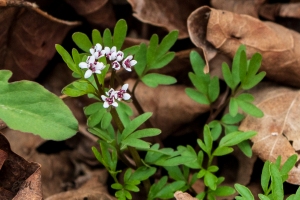 One of the first to appear is harbinger-of-spring (Erigenia bulbosa; Apiaceae). This year I first saw it on March 18, but they sometimes start to flower as early as late February, and may continue through mid April.
One of the first to appear is harbinger-of-spring (Erigenia bulbosa; Apiaceae). This year I first saw it on March 18, but they sometimes start to flower as early as late February, and may continue through mid April.
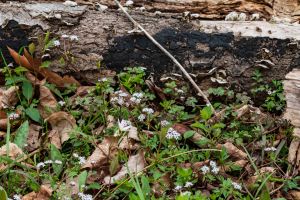 These plants are so small that they’re easy to miss, except when there’s a large stand; then it looks like a light cover of snow on the ground.
These plants are so small that they’re easy to miss, except when there’s a large stand; then it looks like a light cover of snow on the ground.
Spring beauties (Claytonia virginica; Montiaceae) also carpet forest floors early in the season. They are much larger than harbinger-of-spring but still petite, standing only an inch or two tall. They seem to thrive in moist but not wet soils; I seldom see them adjacent to Virginia bluebells, for example, but they’ll be nearby, just upslope, often in rock crevices. 
Spring beauty’s native range runs from the eastern great plains through the midwest, mid-Atlantic, the upper South and lower New England.
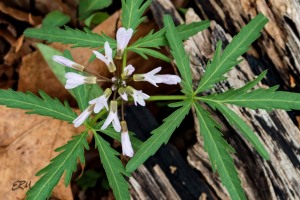 Cut-leaved toothwort (Cardamine concatenata; Brassicaceae) starts blooming soon after spring beauty, and stands a few inches taller. It’s found in much the same habitat but in my observations likes soils a little drier; I’ve never seen it encroaching on a floodplain.
Cut-leaved toothwort (Cardamine concatenata; Brassicaceae) starts blooming soon after spring beauty, and stands a few inches taller. It’s found in much the same habitat but in my observations likes soils a little drier; I’ve never seen it encroaching on a floodplain.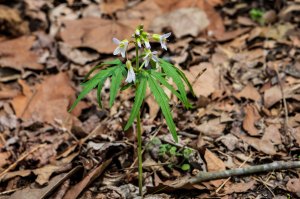
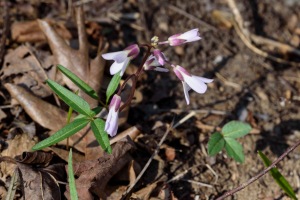 Its close cousins slender toothwort (C. angustata) [left] and spring cress (C. bulbosa) [below] start blooming roughly two weeks later. Read more about the various toothwort species in this post. Look for slender toothwort in drier, rocky areas, and spring cress in very wet areas (vernal pools, for example).
Its close cousins slender toothwort (C. angustata) [left] and spring cress (C. bulbosa) [below] start blooming roughly two weeks later. Read more about the various toothwort species in this post. Look for slender toothwort in drier, rocky areas, and spring cress in very wet areas (vernal pools, for example).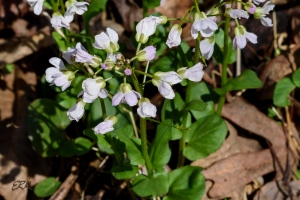
Coming up, more spring ephemerals, and some flowering shrubs.

